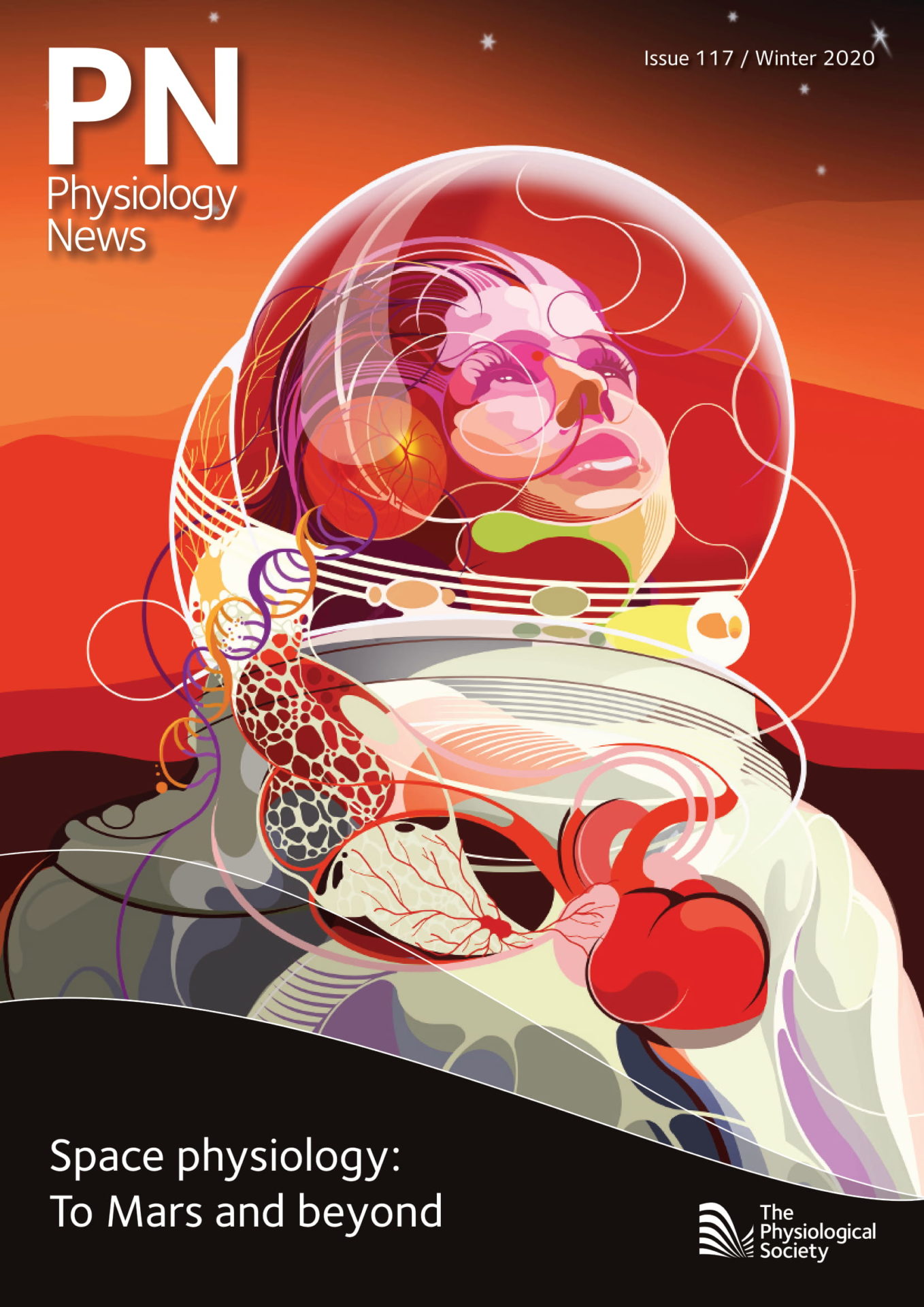
Physiology News Magazine
The NASA Twins studies
News and Views
The NASA Twins studies
News and Views
Martha Hotz Vitaterna
Northwestern University, IL, USA
Peng Jiang
Northwestern University, IL, USA
https://doi.org/10.36866/pn.117.16

The microbiome in space, from the Apollo missions to present
Fifty years ago, when the Apollo 11 astronauts Neil Armstrong, Buzz Aldrin, and Michael Collins returned to Earth, they were quarantined for 21 days, including some days in a converted Airstream trailer where they celebrated Neil Armstrong’s 39th birthday. This was a precautionary measure against the possibility of contagious potential pathogens (“moon germs”), a risk considered as unlikely but uncertain at the time. Following Apollo 14, this quarantine is not required, nor is testing astronauts’ blood by injecting it into mice. Over the past 50 years, research approaches towards astronaut health, the physiological effects of space, and microorganisms have dramatically shifted, reflective of the explosive advancements in biomedical research during this time. These are clearly illustrated by the NASA Twins Study, and studies of the gut microbiome in space, in which we have had the privilege to be involved.
Nearly 50 years after the Apollo 11 mission, the scientific investigation of another landmark human space expedition, astronaut Scott Kelly’s 342 days on board the International Space Station (ISS), culminated in a publication earlier this year in the journal Science1. This year-long mission marked the longest human spaceflight of a US astronaut, and was even more unique because Scott Kelly’s identical twin brother, retired astronaut Mark Kelly, agreed to participate in the study. This provided an unprecedented opportunity to study the effects of long-term spaceflight on the human body. NASA assembled a consortium of 10 investigator teams to study the twins in preparation for future long-term missions such as those around the Moon, asteroids and ultimately Mars.
The Twins Study exemplifies how scientific approaches have evolved over the years. Rather than ten discrete investigations, the study was designed to develop a cross-disciplinary picture of how various systems, from cognition to physiological and molecular processes, may respond, in concert with one another, to the challenge of spaceflight. The result is a rich and intriguing data set. The study was further strengthened by the ability to obtain comparable data from the “ground twin” so that an assessment of expected variability over time in a genetically matched individual with a busy, varied life on Earth could be made. In this manner, variance outside that range seen in the “space twin” could be more confidently attributed to space flight.
Spaceflight-induced microbiome changes seen in the Twins Study were modest, and quickly diminished after the astronaut returned to Earth. Nonetheless, these changes were beyond the day-to-day fluctuations in the gut microbiome composition in the ground twin during the same period of time. Many of our colleagues’ other measures exhibited parallel spaceflight response profiles; future studies can test hypothesised links among these mirrored responses. Neither the integrated, multi-system approach nor the computational and molecular analyses were methods available 50 years ago.
Inclusion of the gut microbiome as a topic for this kind of integrated evaluation of the adaptation to spaceflight also would not have been imagined 50 years ago, when bacteria were primarily viewed with suspicion of pathogenicity. Now, modern high-throughput sequencing approaches reveal a dynamic, diverse and complex “ecosystem” of microorganisms inhabiting the gastrointestinal tract and interacting with mammalian physiology, that change in response to spaceflight and might in fact have the potential to help astronauts to adapt to spaceflight.
From a high-level view, some alterations in the gut microbiome in response to spaceflight are consistent across studies: an increase in the microbial diversity and a shifted microbial community structure have been identified in the NASA Twins Study1 as well as another, subsequent astronaut study 2, and even in mice that have flown on the ISS3. Development of a new analytic strategy, a tool called STARMAPs, revealed that the consistencies of the effects of spaceflight on the gut microbiome go far deeper: the overall patterns of the microbial composition changes are reproducible when comparing mice flown on the space shuttle to those flown on the ISS3. Now, studies to integrate these spaceflight-specific effects with other, related systems can lead to an understanding of the role of the microbiome in adaptation to spaceflight. Such “small steps” of scientific progress, continuing into the next few decades, can advance health in space as well as on Earth, so that we are ready for future giant leaps for mankind.
References
- Garrett-Bakelman FE et al. (2019). The NASA Twins Study: A multidimensional analysis of a year-long human spaceflight. Science 364(6436), eaau8650. DOI: 10.1126/science.aau8650
- Voorhies AA et al. (2019). Study of the impact of long-duration space missions at the International Space Station on the astronaut microbiome. Scientific Reports 9(1), 9911. DOI: 10.1038/s41598-019-46303-8
- Jiang P et al. (2019). Reproducible changes in the gut microbiome suggest a shift in microbial and host metabolism during spaceflight. Microbiome 7(1), 113. DOI: 10.1186/s40168-019-0724-4
